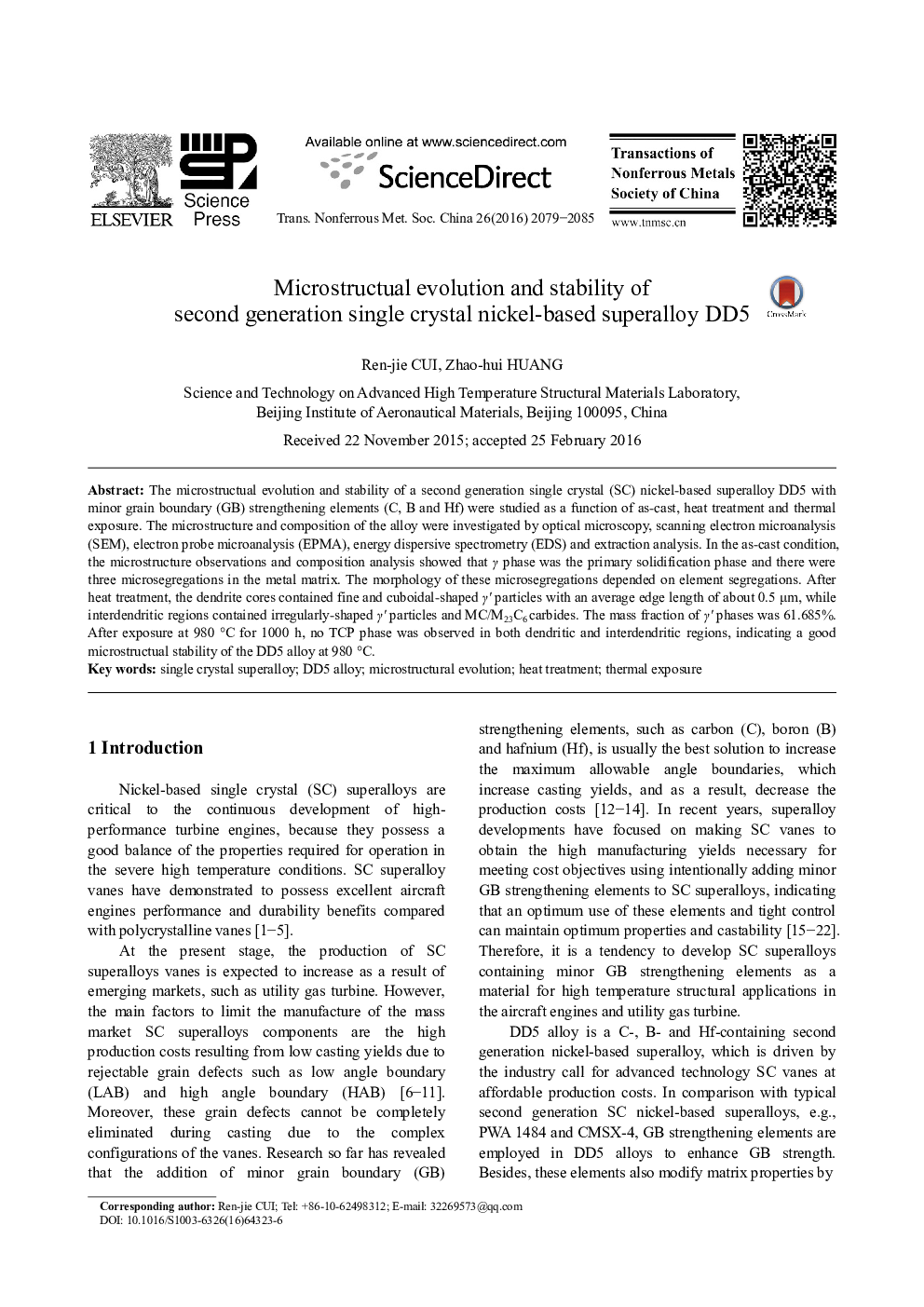| Article ID | Journal | Published Year | Pages | File Type |
|---|---|---|---|---|
| 8012266 | Transactions of Nonferrous Metals Society of China | 2016 | 7 Pages |
Abstract
The microstructual evolution and stability of a second generation single crystal (SC) nickel-based superalloy DD5 with minor grain boundary (GB) strengthening elements (C, B and Hf) were studied as a function of as-cast, heat treatment and thermal exposure. The microstructure and composition of the alloy were investigated by optical microscopy, scanning electron microanalysis (SEM), electron probe microanalysis (EPMA), energy dispersive spectrometry (EDS) and extraction analysis. In the as-cast condition, the microstructure observations and composition analysis showed that γ phase was the primary solidification phase and there were three microsegregations in the metal matrix. The morphology of these microsegregations depended on element segregations. After heat treatment, the dendrite cores contained fine and cuboidal-shaped γⲠparticles with an average edge length of about 0.5 μm, while interdendritic regions contained irregularly-shaped γⲠparticles and MC/M23C6 carbides. The mass fraction of γⲠphases was 61.685%. After exposure at 980 °C for 1000 h, no TCP phase was observed in both dendritic and interdendritic regions, indicating a good microstructual stability of the DD5 alloy at 980 °C.
Related Topics
Physical Sciences and Engineering
Materials Science
Metals and Alloys
Authors
Ren-jie CUI, Zhao-hui HUANG,
